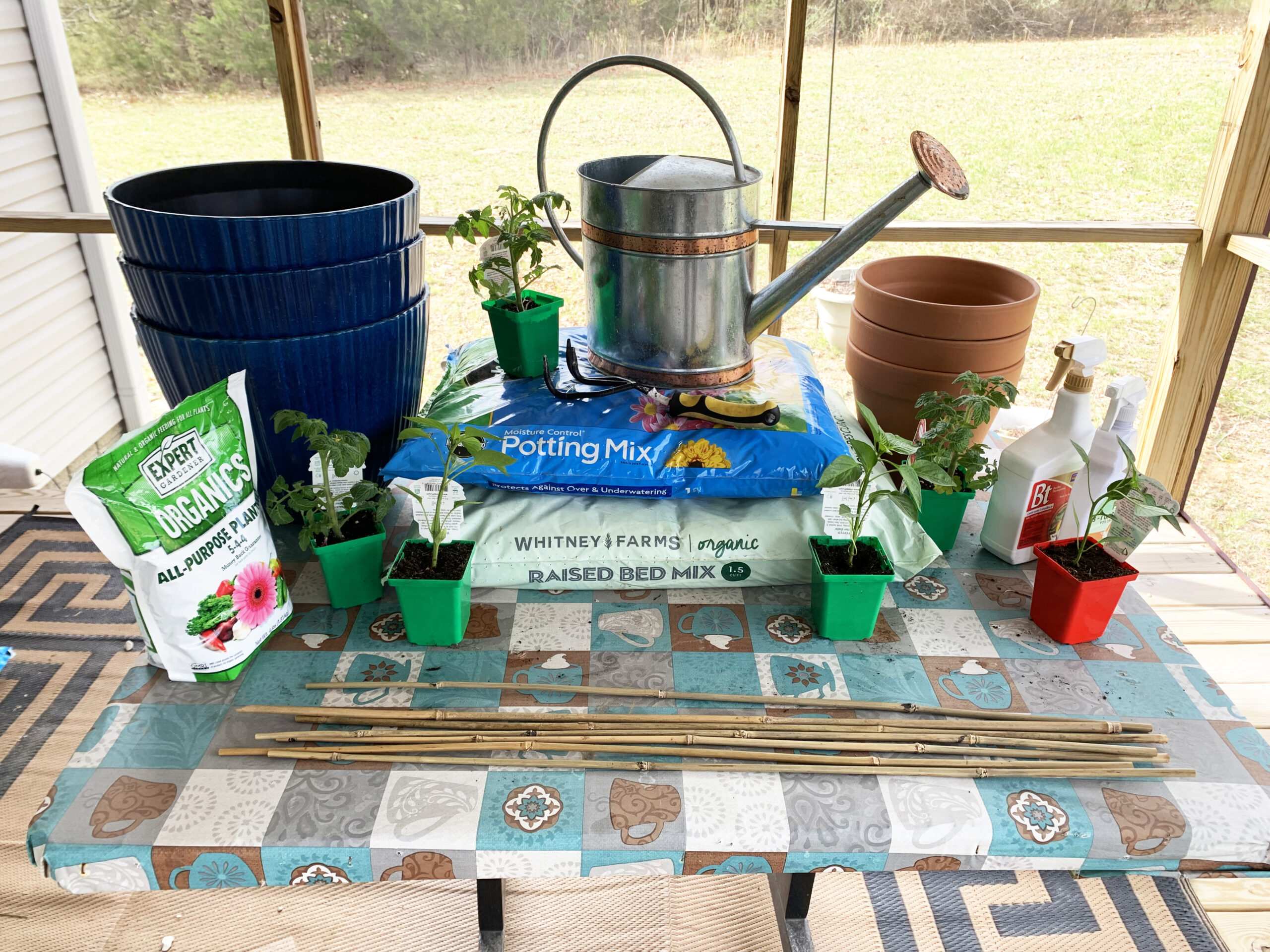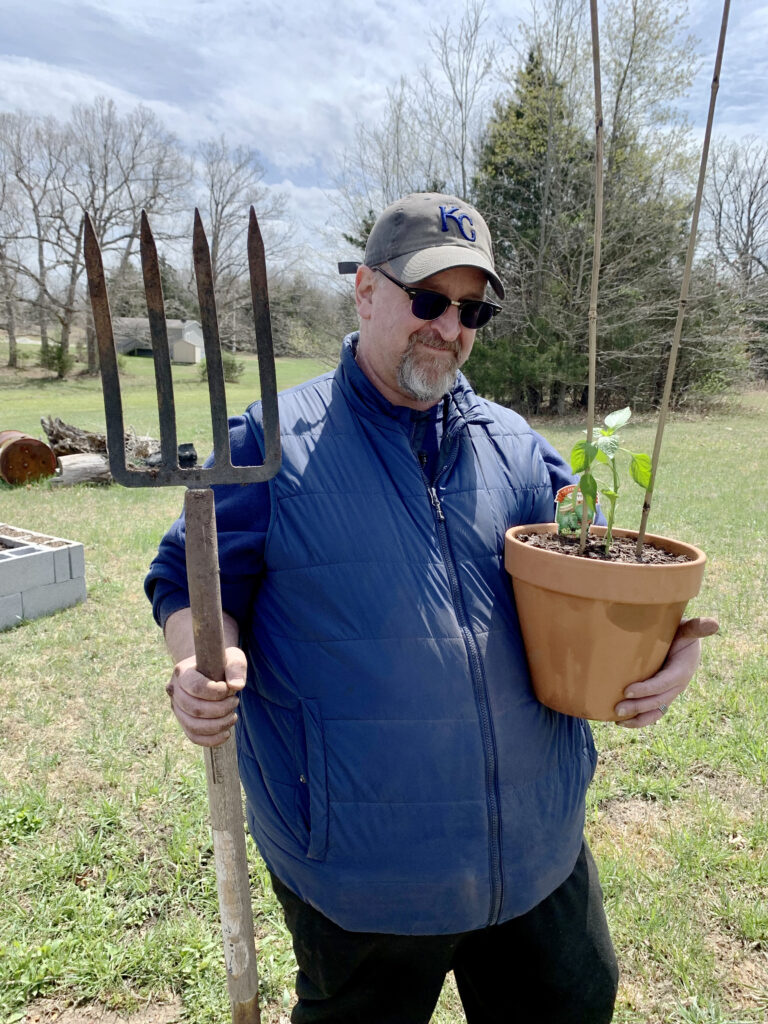
How to Start Growing Your Own Produce this Spring
As the days turn longer and the temperatures rise, everyone is eager to find ways to spend more time outdoors. Steven Meysenburg, Analytics Specialist at Blue Cross and Blue Shield of Kansas City (Blue KC) and Master Gardener-In-Training at the University of Missouri Extension, has a suggestion for a new hobby to pick up: gardening. “I encourage everyone to give it a try! Growing your own food is a challenging and rewarding activity. It’s also good exercise, a soothing simple hobby where you get to reap the benefits of your work.”

In addition to being a fun hobby, growing your own fresh herbs, vegetables, and even fruit can be a cost-effective way to supplement your groceries and help meet your household’s nutritional needs. Blue KC is passionate about addressing food insecurity in our area, which is why we have partnered with a few local organizations, such as After the Harvest, Cultivate KC, Harvesters—The Community Food Network, and Kansas City Community Gardens, to increase access to nutritious food in underserved areas of the city. One easy way to make nutritious food more accessible is to grow your own. To help those who are interested in growing their own fresh produce, we asked Steven for his advice on starting out as a gardener.
What tips do you have for someone who is interested in learning about gardening?
- Start small. Starting small is the most important thing. So many people begin too ambitiously, become discouraged by early failures, and give up. I started with just two five-gallon containers and put a tomato plant in each. From there, I experimented and observed how each did, learning as I went until I eventually felt comfortable growing more challenging plants.
- Do your research before buying. Make sure you understand your plants’ sun, water, and soil requirements, and if the climate in your region is right for them to thrive. You should know what kind of upkeep the plant needs and if you would be able to sustain that before buying.
- One easy way to see if your plant is right for your climate is to check the USDA Plant Hardiness Zone Map, a map developed by the USDA which separates the United States into regions based on the average low winter temperatures and is essential for helping gardeners choose plants. Kansas City is mostly in zones 6a and 6b, so choose plants which can thrive in this environment.
- Invest in essential tools. Gardening doesn’t have a huge upfront cost, but you will need a few things to start:
- Containers to hold the soil and plant. These can cheaply be found at nurseries or garden centers.
- A good pruning sheer to prune dead or diseased leaves.
- A couple of bags of potting mix or potting soil.
- A watering can to help ensure you are watering your plants gently and directly at the roots.
- Protection for yourself – a good pair of gloves, a sunhat if you intend to spend a lot of time outside.
What are the best plants to start with in Kansas City?
Tomatoes are a popular choice to start as they are so easy to grow. It’s also a very versatile plant: you can grow cherry tomatoes for salads, tomatoes specifically for canning, slicing tomatoes for sandwiches. I also enjoy growing cucumbers. They’re a relatively easy plant and I particularly like turning them into pickles or slicing them up for salads.
Fruits are more complicated as they often grow in trees and bushes which (1) take a long time to reach maturity, and (2) require a larger yard. Strawberries, however, can be grown in containers if the plant has access to plenty of sun, so I would recommend starting there.
For tips on how to store your fresh fruits and veggies, check out this article.
What are some common mistakes that beginner gardeners make and how to avoid them?
Over the years I’ve realized that gardening is a battle between my innate need for order and nature’s propensity for chaos. Some things are out of our control: there can come a frost that kills off your plants, for example, and there isn’t much you can do about that. There will always be an element of luck in gardening, but some common pitfalls to avoid include:
- Overwatering: this is the most common mistake I see. It’s almost better for a plant to have too little water than too much, but this is very counterintuitive to beginner gardeners. Many plants are designed to resist or bounce back from small periods of drought, but overwatering can expose the plants to diseases they may not be able to survive. Make sure to research how much water your plant needs and resist the temptation to give it more than that.
- Ignoring your plants. It can be hard to motivate yourself to go out in the garden when it’s hot and you’ve had a long day of work, but it’s so important to check on your plants every day. You might catch a worm eating your leaves, or see that weeds are growing and taking nutrients out of the soil. It’s vital to spend time with your plants as things can quickly spiral out of control and kill off your garden.
- Not doing enough research. I’ve been guilty of this myself – I see a pretty plant at the gardening shop, I decide to buy it without checking what kind of climate it needs to thrive and how to properly care for it, and it soon dies. It’s important to make sure you understand a plant’s needs before trying to grow it.
Do you have any advice for people who don’t have access to a garden, or who don’t have the time/ability to get into gardening?
If you don’t have a garden or nice sunny space in your house to place containers, community gardens are becoming a popular option, especially in cities. For a small fee you can participate in a communal garden, dividing duties like pulling weeds and clearing out debris, and sharing the bounty your plot produces. If you don’t have the time or ability to garden, I also recommend checking out local farmer’s markets to find fresh, healthy fruits and vegetables. Not only is this great for your health, it also supports the local economy and shortens the distance between farm to table. A few to check out in Kansas City include City Market, Overland Park Farmer’s Market, Brookside, and Lee’s Summit.
For tips on incorporating fresh produce into your diet, check out this article.


